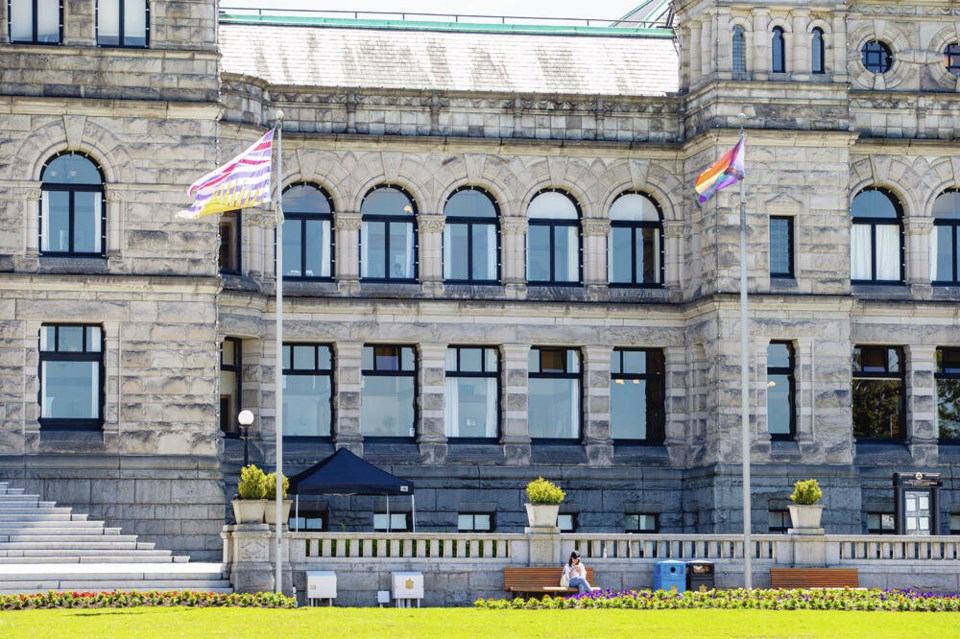An all-party legislative committee on the toxic-drug overdose crisis has released a report with 37 recommendations aimed at digging the province out of the public health emergency, which has seen more than 10,000 deaths since April 2016 .
The recommendations include scaling up a range of services, filling gaps in the continuum of care, substantially increasing treatment and recovery beds and services, and ensuring ready access to take-home naloxone kits for all individuals.
The Select Standing Committee on Health’s report Closing Gaps, Reducing Barriers: Expanding The Response To The Toxic Drug and Overdose Crisis was tabled Tuesday morning.
It calls on the government to “urgently fund a substantial increase in publicly funded, evidence-based, and accredited treatment and recovery beds and outpatient services, including managed withdrawal (detox) and aftercare supports, while ensuring a variety of treatment options to support individual and family needs.”
NDP MLA Niki Sharma, chair of the committee, said Tuesday that members received briefings from federal and provincial government ministries and agencies, health authorities and other experts, in addition to 118 presenters at public hearings and 881 written submissions.
The report’s executive summary pointed to “critical gaps” in the care process, “some of which were exposed or made worse by the COVID-19 pandemic.”
Sharma told the house during question period Tuesday the committee heard some British Columbians are not able to access life-saving supports and services, either because they aren’t available in their communities or because of other barriers — ranging from “arduous” requirements for receiving medication, long wait-lists for entering treatment programs or “spaces that are not welcoming to people.”
The recommendations suggest identifying barriers to providing a safer supply of drugs, increasing public awareness of the risk of substance use and disrupting the supply of illicit drugs imported to Canada.
The committee says goals, metrics and timelines should be defined and publicly reported — for example, the government should clearly articulate targets for expanding services and regularly report on its progress.
One “striking” gap emerged during an examination of how often people who died due to illicit drug toxicity had had recent contact with the health-care system or government services — from receiving social-assistance payments to contact with WorkSafeBC due to a workplace injury, or care from first responders following a drug overdose.
Each represents a critical “touchpoint” to connect those at risk with lifesaving supports and services, said the committee, which recommended that such “missed opportunities be urgently identified and acted upon.”
In response the the report’s call for urgent expansion and funding of treatment and recovery beds, Mental Health and Addictions Minister Sheila Malcolmson said the government has opened up hundreds of treatment, sobering and stabilization beds, particularly over the last two years, in what she called an unprecedented expansion, although she said more needs to be done.
Deputy chairperson Shirley Bond said the committee wants to see significant investments in everything from prevention and education to treatment and recovery, as well as ongoing evaluation and monitoring to ensure results are achieved.
Bond said in the legislature the toxic-drug overdose crisis needs to be dealt with as urgently as the pandemic. She said the most frequent issue raised during the committee’s work was access to treatment and recovery. “It is absolutely critical that there be a substantive expansion of publicly funded and accredited treatment and recovery services.”
The majority of people dying are young men using drugs alone and working in the trades and transportation as equipment operators. Bond noted that Indigenous people are dying at significantly higher rates, especially Indigenous women — “in fact, 9.8 times more frequently than other women in our province.”
Green Party Sonia Furstenau noted in the legislature that the thousands of deaths were caused by drug poisonings — not overdose. “They did not take too much of a drug — 10,000 people used a drug that was deadly, either because it had too much fentanyl or because it had a combination of substances that were deadly,” said Furstenau, who pointed to the example of 18-year-old Kylie Walker of Victoria, who died of a suspected drug poisoning early last Friday.
After hearing the news, her great uncle, Cowichan school trustee and Cowichan Tribes member Joe Thorne, “drove around Duncan that evening, warning people, especially youth, that the drugs that were circulating were deadly,” said Furstenau.
Furstenau also pointed to Jessica Michalofsky, who has been jogging around the Ministry of Health building on Blanshard Street every day asking the government to make available a safe supply of drugs for people who use them, in honour of her 25-year-old son, Aubrey, who was killed by toxic drugs.
Michalofsky, who spoke to the Times Colonist in October, is expected to meet with Malcolmson on Thursday.
“This is the reality of the crisis: mothers, fathers, uncles, grandparents, brothers, sisters trying to get the government to ensure that a safe supply of drugs is available and that information on how to access that safe supply is available to people who need it, when they need it,” said Furstenau.
In March, a coroners death review panel released recommendations to “ensure a safer drug supply to those at risk of dying from the toxic illicit drug supply.”



